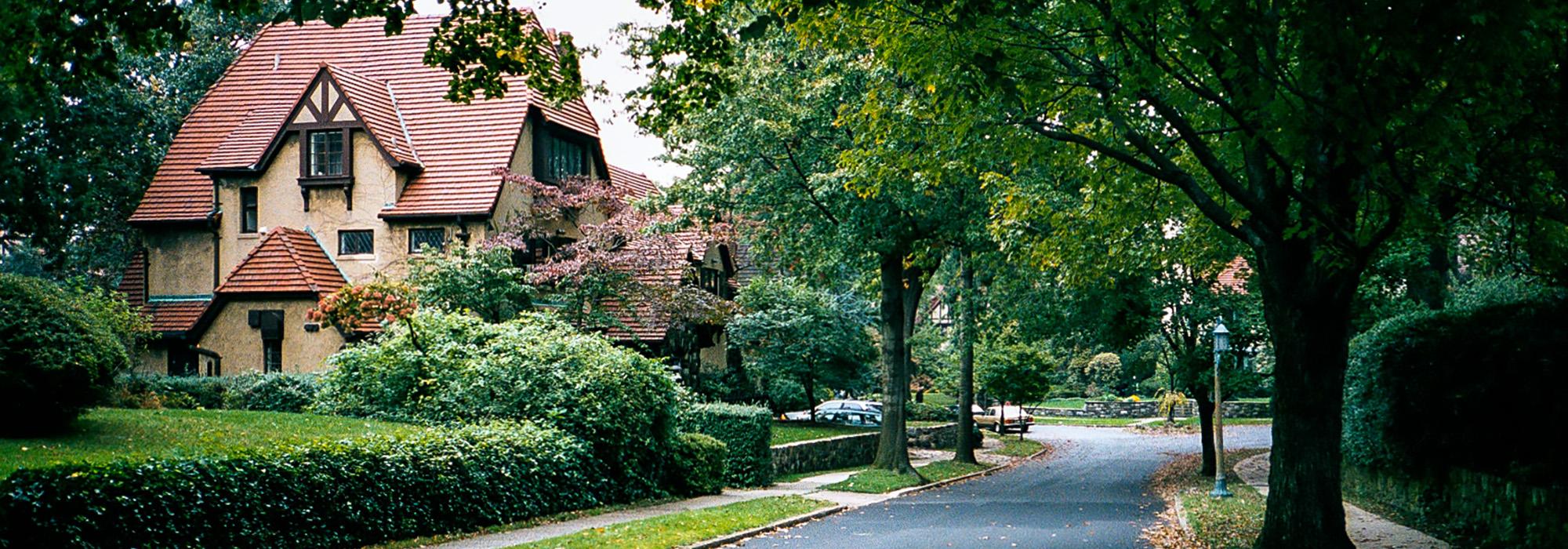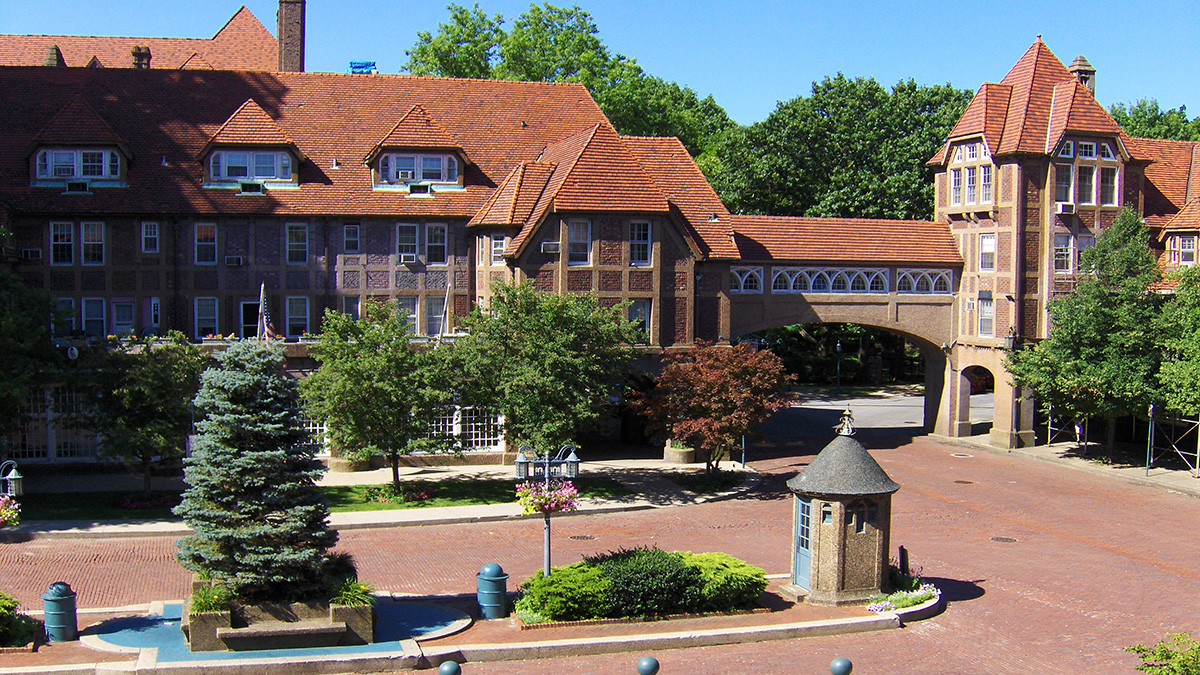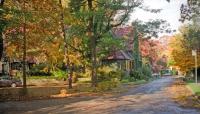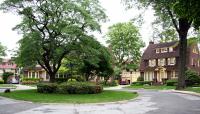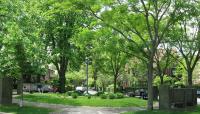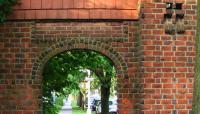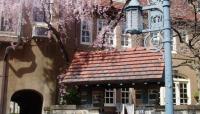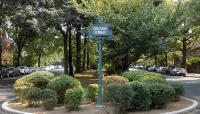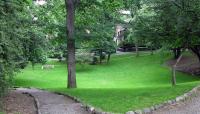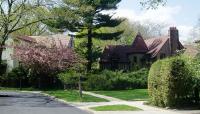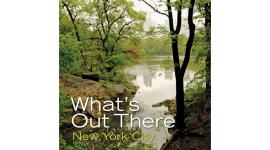Landscape Information
Between 1901 and 1910, the construction of the Queensboro Bridge and the Long Island Rail Road tunnels spanning the East River made central Queens a viable bedroom community. In 1906, the Cord Meyer Development Company amassed 600 acres of farmland with the intention of creating Forest Hills, a middle-class residential neighborhood. Three years later, the corporation sold 142 acres to the Russell Sage Homes Foundation, founded by Margaret Olivia Slocum Sage, a fan of Ebenezer Howard’s Garden Cities of To-Morrow (1898) who sought to create an idyllic garden suburb. Sage hired Frederick Law Olmsted, Jr., of Olmsted Brothers and Grosvenor Atterbury for the general plan.
Modeled after a traditional English village, the plan features a shopping village along the parcel’s southern boundary and two small parks, Flag Pole Green and Station Square, a distinctive town center with commuter train station. The tree-lined residential streets, laid out by 1910, were made curvilinear to discourage through-traffic; sidewalks promoted pedestrian use. The landscaped housing lots were substantial, and only Tudor or Georgian houses were to be constructed of masonry or concrete with either red-tile or slate roofs. Atterbury used standardized precast concrete panels in his house designs. Today the community consists of over 800 single-family homes, townhouses and garden apartment buildings.
In 1913, the West Side Tennis Club, which hosted the U.S. Open Tennis Championships between 1915 and 1977, relocated to the northeast section of Forest Hills Gardens. One of America’s earliest garden cities, the development is managed by the Forest Hills Gardens Corporation.



